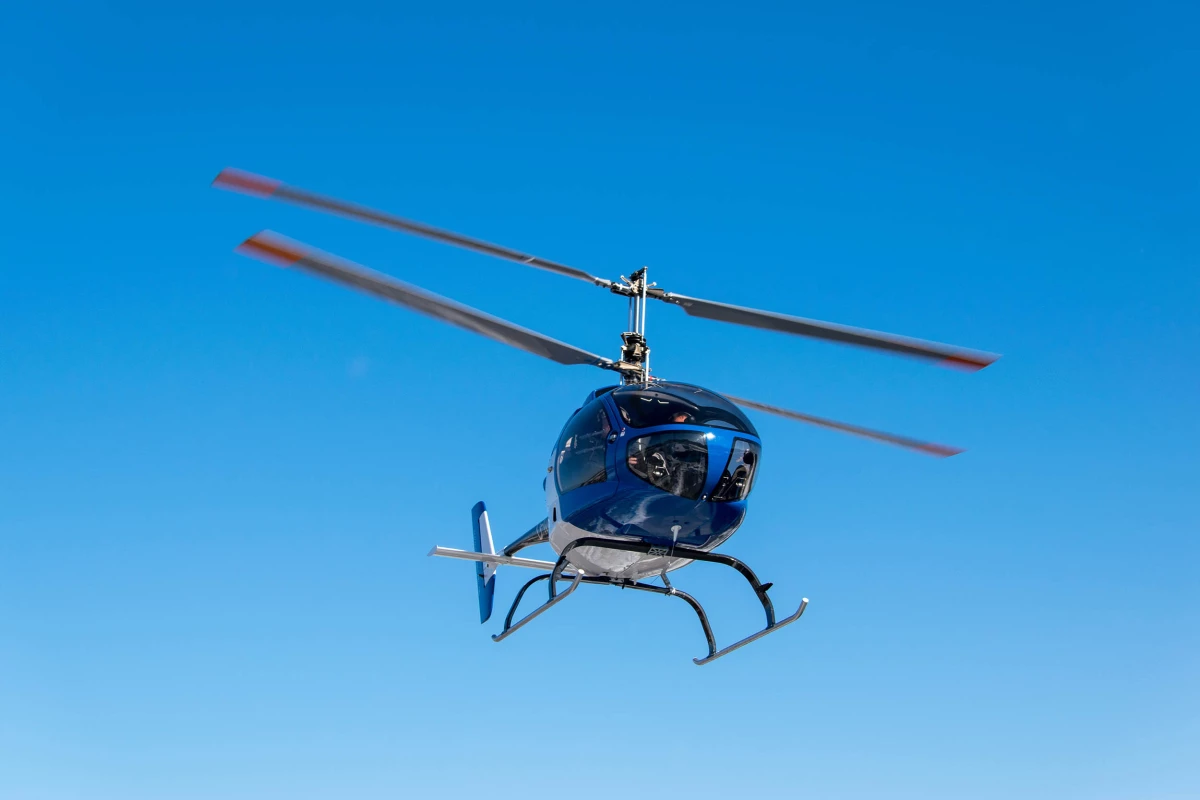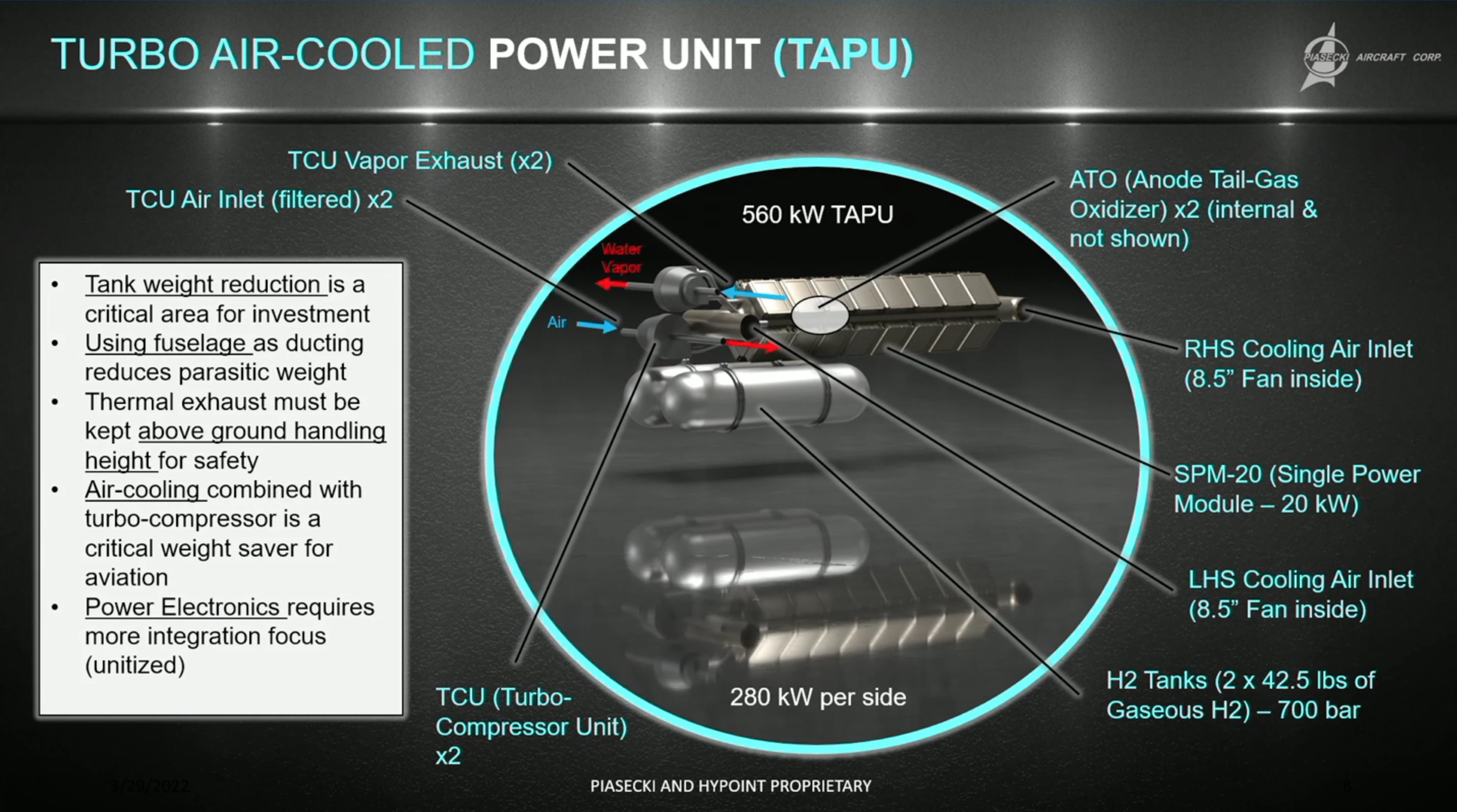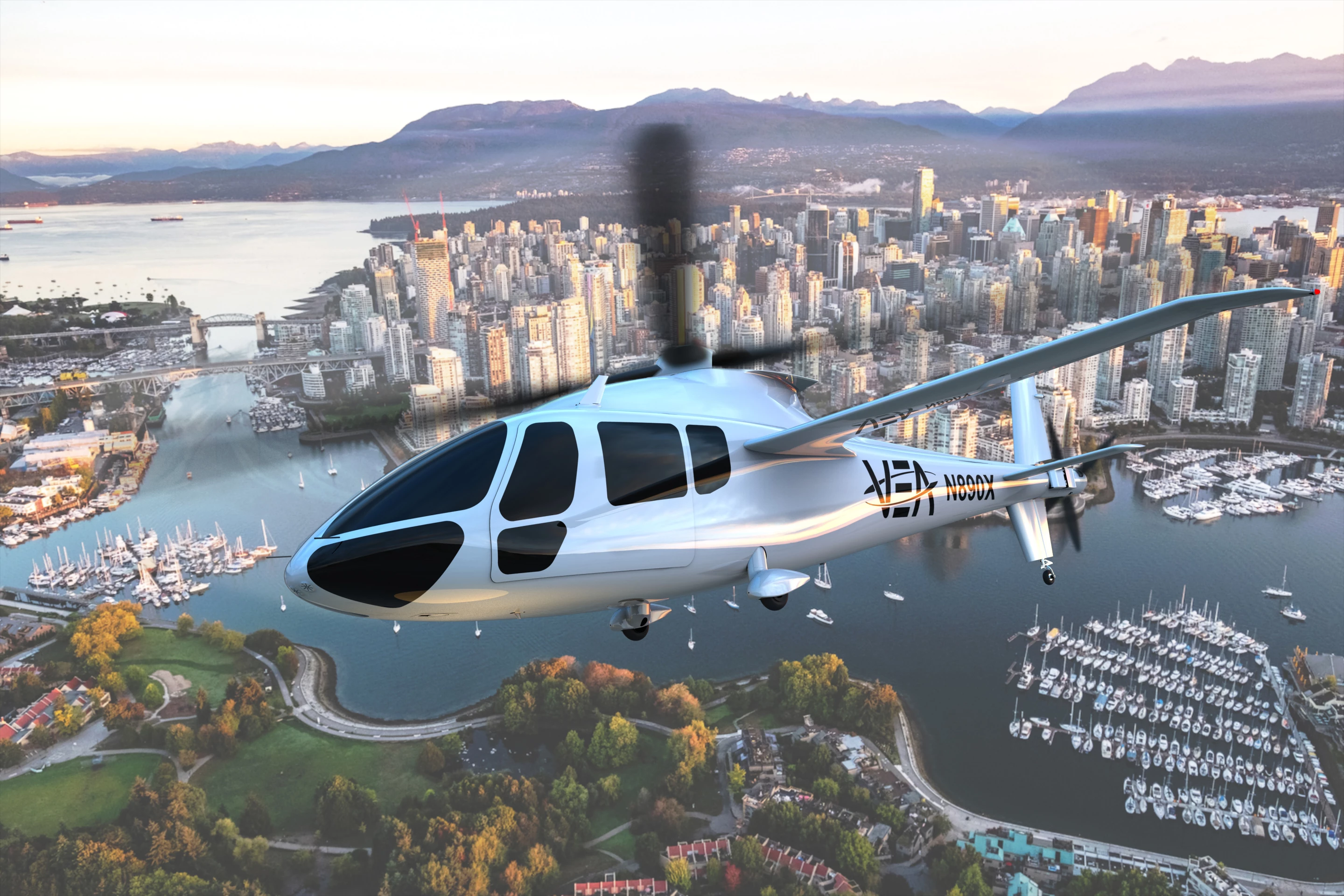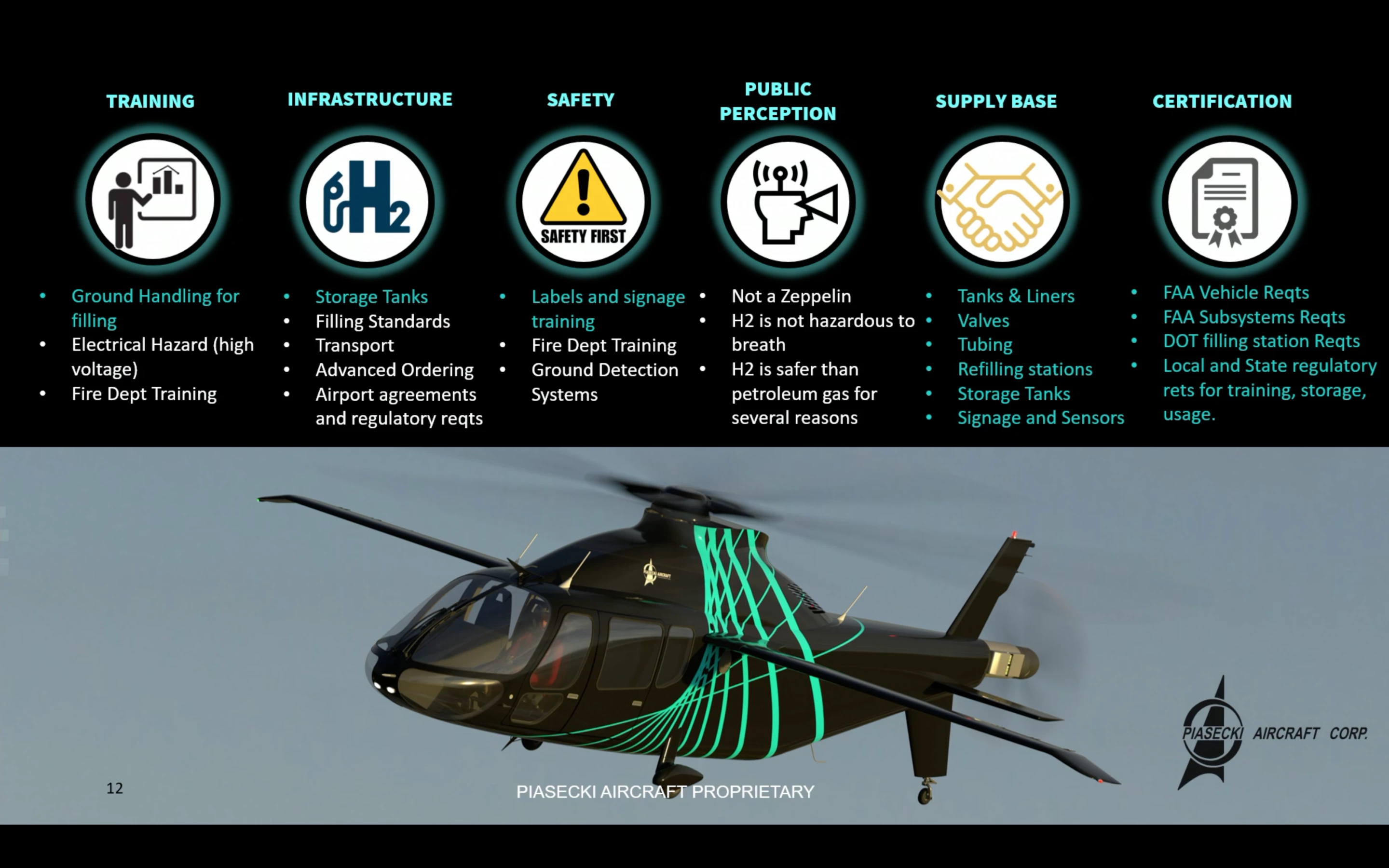Piasecki Aircraft has announced it's putting a HyPoint turbo air-cooled fuel cell and an electric powertrain into an ultralight helicopter from EDM Aerotec, hoping to achieve the world's first manned hydrogen-powered helicopter flight – with its own complete aircraft under development in parallel.
John Piasecki, company CEO, addressed last week's H2 Aero conference, run by the Vertical Flight Society, to outline his company's plans, as well as discussing the clean aviation space in general. John's father Frank is known to this day as the father of the modern tandem helicopter, so you'd expect Piasecki junior to be taking an ambitious approach at the dawn of the electric aviation age – and this certainly seems to be the case.
The company was never interested in developing short-range VTOLs for urban air taxi scenarios. Instead, it has focused from the beginning on fulfilling existing helicopter mission profiles, requiring range figures over 230 miles (370 km) plus reserve, while significantly reducing or eliminating emissions – and it factored cost into every step of the evaluations.
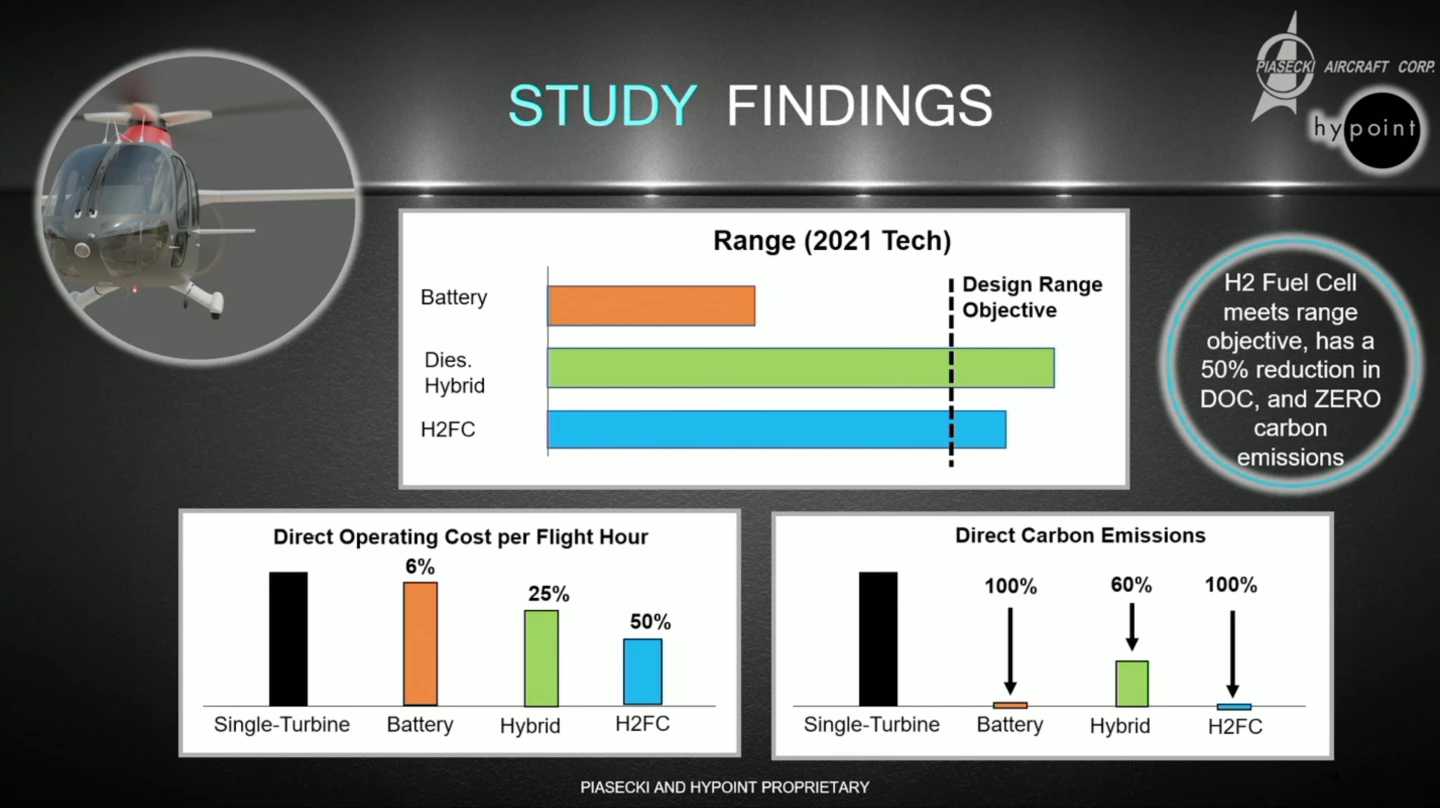
And it was cost, even more than restrictive range, that knocked batteries out of the equation for Piasecki.
"Vertical lift is a challenging operating environment," he told the room at H2 Aero. "It demands high discharge and recharge rates – high C rates. And even assuming a certain level of energy density became available in future batteries, most battery technologies' cycle life drops by an order of magnitude under high C rates. That has a fundamental impact on the economics, and if you can't provide a compelling economic case for the adoption of your aircraft, you put your program at risk."
So batteries were out. Hybrid powertrains looked better, Piasecki calculating they had the potential to deliver a 25-percent reduction in operating costs. But they would only reduce emissions by about 60 percent relative to a turbine-powered helicopter (80 percent if sustainable aviation fuels were used), and even the existing hydrogen fuel cell technology is enough to fulfill the target mission profiles, with zero emissions and an impressive 50-percent drop in operating costs.
Piasecki has thus partnered with HyPoint, whose turbo air-cooled fuel cells promise extremely low weight and extremely high power – as much as three times better power-to-weight than other technologies, and enough power that HyPoint says many aircraft won't even need to run buffer batteries.

"The fuel cell technology that's available today is just the starting point," said Piasecki. "We've worked with HyPoint to identify targets for improvement in specific power and energy density, which we'll validate through tests. That growth capability is why we feel like there's so much opportunity here to be explored."
Piasecki is in the process of designing an entire five-seat, multiple-fitout-capable helicopter around HyPoint's powertrain, currently designating it the PA-890.
"One of the key things we're learning," says Piasecki, "is that the fuel cell can't be designed in isolation. It really needs to be designed as an integrated part of the air vehicle in order to maximize the efficiencies that are achievable. You need cross-functionality, to use the airframe itself to manage the thermal environment."
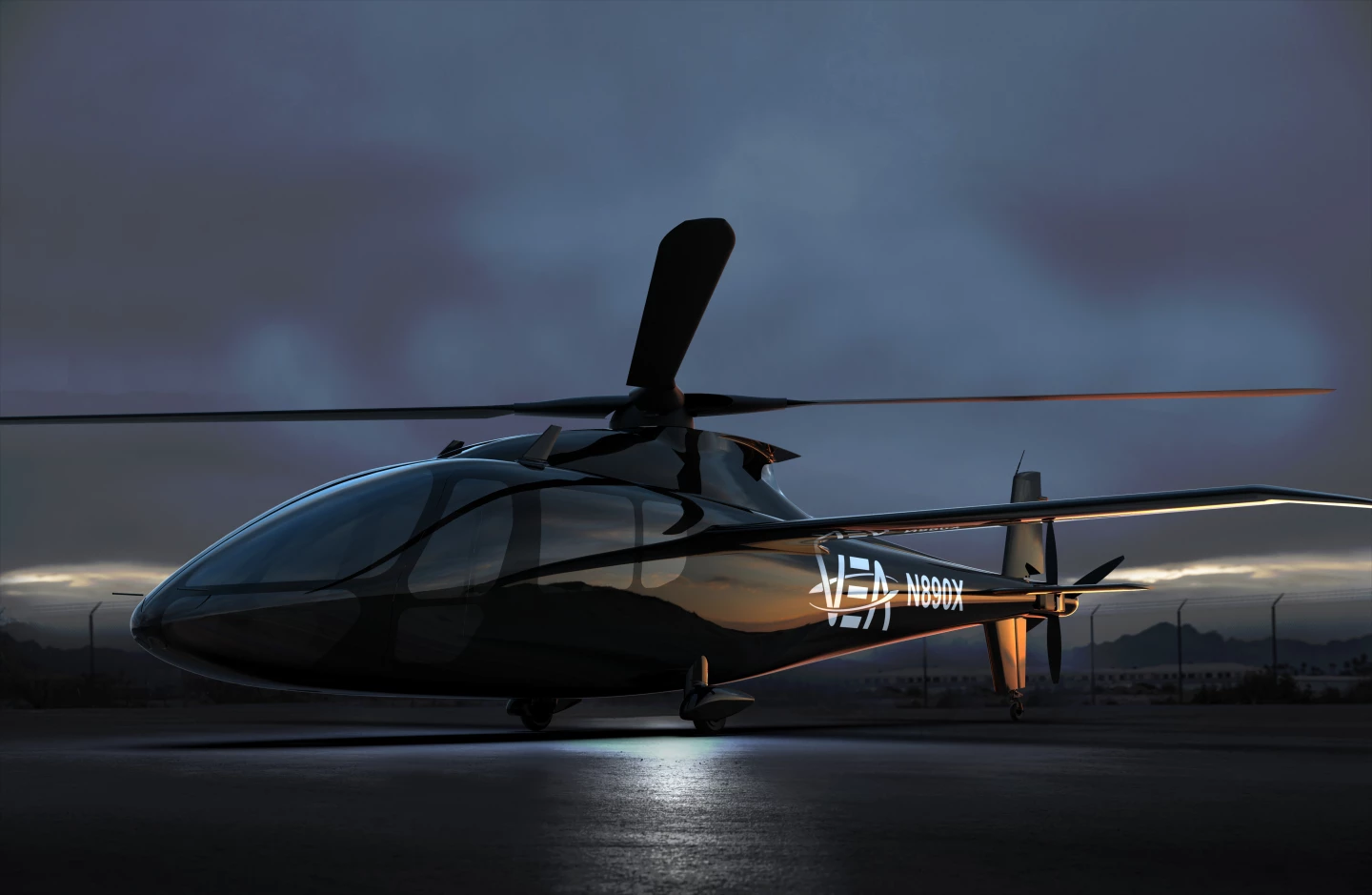
The PA-890 is currently being designed around HyPoint's SPM 20 fuel cell units, each producing 20 kW of peak power. These are stacked into a core power unit peaking at 560 kW running down the middle of the fuselage, over a pair of 700-bar pressurized H2 gas tanks, each holding up to 42.5 lb (19.3 kg) of hydrogen. A filtered air inlet will feed the fuel cells with oxygen, while fan-forced cooling air channels help manage temperature. An anode tail-gas oxidizer, says Piasecki, "recuperates power back into the system for higher efficiency."
This will be a slowed-rotor, winged helicopter design, with a large top rotor, and variable incidence wings that can fold back against the sides of the aircraft in VTOL and hover phases of flight, or open right out to unload the top rotor and allow it to slow down for quieter, more efficient forward flight at speed. An electric tail rotor provides anti-torque and yaw control at a hover or in slow flight, but it's also designed to swivel back and become a forward propulsion unit once the PA-890 is flying on the wing.

Before it starts prototyping its own design, the Piasecki team plans to "test the hell out of" the fuel cell powertrain using a small, cheap, off-the-shelf compound helicopter. The company has settled on the CoAX 2, from Aerotec, an affordable enough machine at around US$180,000. It's an ultralight category heli, so it'll use a much smaller 80-kW powertrain. Piasecki will remove the existing powertrain and fit four SPM 20 fuel cells, a single H2 tank, cooling systems and electric motors for the two contra-rotating top rotors.
"We think – well, we hope – that it's going to be the first manned, hydrogen-powered helicopter flight," says Piasecki. "We'll be running those tests alongside ground-based power system and propulsion system testing for the full-scale 560-kW fuel cell system. And ultimately that'll inform our development and qualify the hydrogen system for full-scale flight in the PA-890."
Piasecki didn't outline a timeframe for development and flight testing, although one slide suggests that the company expects to have a full-scale powertrain ready for ground testing before the end of this year.

The ultimate goal, of course, is to get to a fully certified production aircraft, and the company has been focused on that goal for some time.
"We now have regular meetings with the FAA, going over what our plans are for certification," said Piasecki. "This'll be an educational process, for us as well as for the regulators. We've developed preliminary special conditions; we'll be certifying the PA-890 under Part 27. They've been very co-operative, the FAA is trying to lean forward. It's unusual to say that about a regulatory agency, but they're seeing the potential here and they want to find a way forward. But we'll still have to work our tails off to define the requirements, test to them and establish a compliance basis."
Sources: Piasecki Aircraft, Vertical Flight Society via FutureFlight
Special thanks to VFS Executive Director Mike Hirschberg for his assistance on this story.
